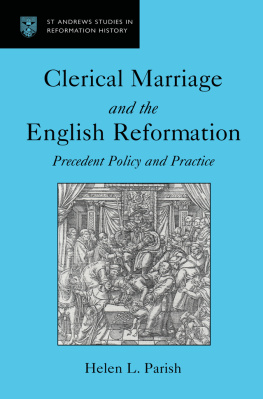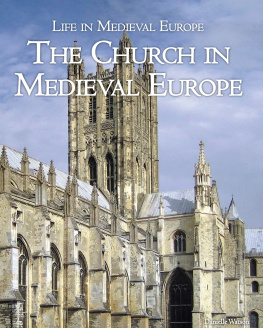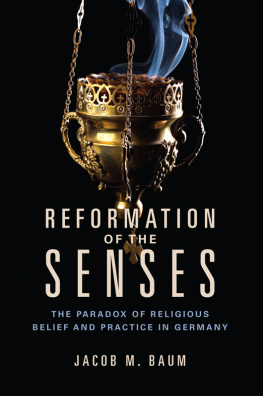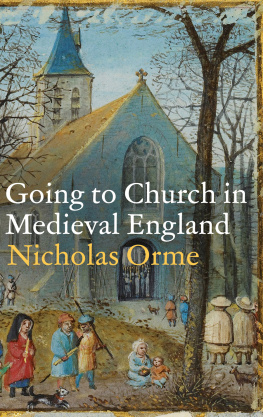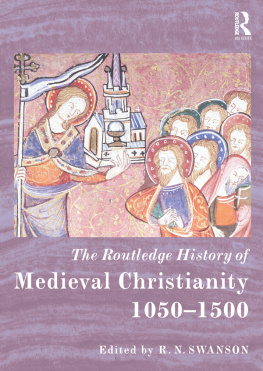
MONKS, MIRACLES AND MAGIC
Helen Parish presents an innovative new study of Reformation attitudes to medieval Christianity, revealing the process by which the medieval past was rewritten by Reformation propagandists. This fascinating account sheds light on how the myths and legends of the Middle Ages were reconstructed, reinterpreted and formed into a historical base for the Protestant church in the sixteenth century.
Despite the iconoclastic impulse that underpinned the Reformation in England, this bold new work demonstrates that traditional images of saints, popes, miracles and wonders were not expunged from the religious lexicon but, rather, appropriated, reformed and deployed in the service of religious change.
Crossing the often artificial boundary between medieval and modern history, Parish draws upon a valuable selection of writings on the lives of the saints from both periods, and addresses ongoing debates over the relationship between religion and the supernatural in early modern Europe.
Setting key case studies in a broad conceptual framework, Monks, Miracles and Magic is essential reading for all those with an interest in the construction of the Protestant church and its medieval past.
Helen L. Parish is Lecturer in History at the University of Reading, author of Clerical Marriage and the English Reformation (2000) and co-editor of Religion and Superstition in Reformation Europe (2003).
MONKS, MIRACLES AND MAGIC
Reformation representations of the medieval church
Helen L. Parish
First published 2005
by Routledge
2 Park Square, Milton Park, Abingdon, Oxon OX 14 4RN
Simultaneously published in the USA and Canada
by Routledge
711 Third Avenue, New York, NY 10017
Routledge is an imprnt of the Taylor & Francis Group, an informa business
2005 Helen L Parish
Typeset in Goudy by Bookcraft Ltd, Stroud, Gloucestershire
All rights reserved. No part of this book may be reprinted or reproduced or utilised in any form or by any electronic, mechanical, or other means, now known or hereafter invented, including photocopying and recording, or in any information storage or retrieval system, without permission in writing from the publishers.
British Library Cataloguing in Publication Data
A catalogue record for this book is available from the British Library
Library of Congress Cataloging in Publication Data
1 Church history Middle Ages, 6001500 2 Church history 16th century 3 Reformation 4 Christian saints Cult History of doctrines Middle Ages, 6001500 I Title
BR280.P37 2005
270.3'072dc22
2004016256
ISBN 0-415-31688-X (hbk)
ISBN 0-415-31689-8 (pbk)
CONTENTS
Many debts, professional and personal, have been incurred in researching and writing this book. The project had its origin in work I undertook as a Junior Research Fellow at Wolfson College, Oxford, and I am extremely grateful to the Fellows, staff, and students of the College who provided an environment that was as congenial as it was conducive to study. In recent years I have also benefited greatly from the support of colleagues in the School of History at the University of Reading. Colleagues in early modern history have provided a sympathetic ear, while those in medieval history have tolerated with good humour the ignorant questions of a Reformation specialist. I am particularly grateful to the School and University for a generous period of sabbatical leave, and to the Arts and Humanities Research Board, whose award of a Research Leave Award enabled the completion of the book. I have also benefited from the opportunity to present early drafts of sections of the book to research seminars at the University of Oxford, the University of Reading, University College, Chichester and the University of Birmingham. Participants at the Reformation Studies Colloquium, the Annual Conference of the Tyndale Society and the European Reformation Research Group have been more helpful than they may realise in correcting misconceptions and opening up new avenues for exploration. Readers for the press made helpful and constructive observations, and the advice of editorial staff at Routledge has been consistently prompt and perceptive.
I am grateful to Alison Butler of the University of Bristol for allowing me to read her paper on Pope Silvester II, and to Dr Alexandra Kess of the University of St Andrews for her advice in tracking down references to the works of Johannes Sleidan. I am especially thankful to staff at the British Academy John Foxe project who have provided advice on all things Foxeian, particularly Dr Tom Freeman, who generously allowed me to read his work on Foxes histories of the medieval papacy prior to its publication on the project website. Sections of are reproduced with the kind permission of Sixteenth Century Journal.
Research for this book has been made all the more enjoyable by the assistance and expertise of the staff of the Bodleian Library in Oxford, the British Library and the University Library in Reading. Gill Cannell at the Parker Library, Corpus Christi College, Cambridge, was particularly helpful and supportive of my efforts to with the permission of the Library of the University of Reading.
On a more personal note, I have benefited greatly from frequent and timely reminders that there is more to life than medieval saints and Reformation polemicists. Friends and family have been a constant support, and my husband Gavin has treated my ongoing obsessions with a mixture of good humour and penetrating criticism. My father, Peter Parish, tolerated his daughters reluctance to consider anything after 1800 as proper history with the greatest respect; his death in 2002 was the loss of a parent, friend and inspiration. I am sure he would have been duly critical of what follows.
Stylistic note
In quotations from primary sources, the original spelling has been retained, although Roman numerals in signature references are represented in Arabic form in the notes. The italicisation of life and lives throughout the text is intended to identify the written biography, or life of the saint. Dates are in Old Style, but the year has been taken to begin on January 1.
It was in the person of the saint that the many worlds of medieval religion coalesced. The saint existed, both in heaven and on earth, as a spiritual companion whose bodily remains acted as a conduit through which the supernatural intruded into the material world. The saint straddled the boundary of the living and the dead, as a patron and protector whose intercession was vital to the safety and the salvation of the individual. The saint stood at the intersection of Christianity and paganism, in the encounter between a missionary church and its rivals and in the delineation of a Christian supernatural which shaped the relationship between the miracles of the church and the magic of its opponents. The saint personified the common ground between learned theology and popular piety, where local pressures might influence institutional pronouncements and where the didactic purpose of the preacher found expression in familiar words and images. The saint also provided a crucial link between the past and the present, a figure through which models of piety from a previous age could inspire faith and virtue in the present, and through which the faith of the present could shape the record of the past. The role and function of the saint extended from the pastoral to the punitive, from the miraculous to the mundane, and was rehearsed in the liturgy of the church, commemorated in shrines and images, and promoted in print and from the pulpit. It is not surprising, therefore, that the cult of the saints rapidly became a central issue in the debates and controversies of the Reformation. Saints who had dominated the landscape of lay religion became monuments to the presence of false doctrine and superstition in the medieval church. The miracles of the saints, which had acted as signs of their privileged position, were recast as symbols of the magic that was inherent in the faith and traditions of medieval Catholicism. The


